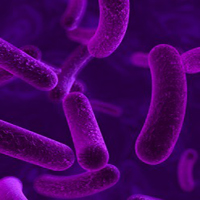Case series of Salmonella spp. infections confirmed by culture test at the hospital clinical laboratory in L’Aquila (Italy), years 2011-2018

Accepted: 9 December 2020
HTML: 9
All claims expressed in this article are solely those of the authors and do not necessarily represent those of their affiliated organizations, or those of the publisher, the editors and the reviewers. Any product that may be evaluated in this article or claim that may be made by its manufacturer is not guaranteed or endorsed by the publisher.
In the European Union between 2008 and 2017 there was a statistically significant decrease in the confirmed cases of salmonellosis. Nevertheless, it represents the first cause of food-borne outbreaks and the secondly most frequently reported zoonosis. Considering the pathogen diffusion and clinical consequences, monitoring the incidence of Salmonella spp. infections is a priority for public health. The study is aimed at describing the temporal trend of prevalence of Salmonella spp. positive tested and serotypes characteristics of the isolates by L’Aquila hospital laboratory microbiological analysis in 2011-2018, with a focus on the epidemic phase occurred from October 2013 to May 2014. The survey is a case series report, with a retrospective design. During the period considered, 220 infected carriers were identified, in particular 160 positive samples for Salmonella enterica serogroup B, so it was the main group causing salmonellosis in the area of L’Aquila both in the epidemic period and in the non-epidemic period. Moreover, the proportion of cases in early paediatric age (from one to five years) resulted statistically higher in the epidemic period than in the non-epidemic period. About the possible causes of the outbreak, the hypothesis of an environmental contamination seems to be plausible.
2. Chlebicz A, Śliżewska K. Campylobacteriosis, Salmonellosis, Yersiniosis, and Listeriosis as Zoonotic Foodborne Diseases: A Review. Int J Environ Res Public Health. 2018;15(5):863. Published 2018 Apr 26. doi:10.3390/ijerph15050863
3. Cito F, Baldinelli F, Calistri P, et al. Outbreak of unusual Salmonella enterica serovar Typhimurium monophasic variant 1,4 [5],12:i:-, Italy, June 2013 to September 2014. Euro Surveill. 2016;21(15):10.2807/1560-7917.ES.2016.21.15.30194. doi:10.2807/1560-7917.ES.2016.21.15.30194.
4. Distasi MA, Porzio M, Del Gaudio T. Epidemiology of enteric pathogens found in stool symptomatic patients selected in a northern Bari region population between 2000 and 2009. MM [Internet]. 30Jun.2011 [cited 15Sep.2020];26(2). Available from: https://www.pagepressjournals.org/index.php/mm/article/view/mm.2011.2362.
5. EFSA and ECDC (European Food Safety Authority and European Centre for Disease Prevention and Control), 2018. The European Union summary report on trends and sources of zoonoses, zoonotic agents and food-borne outbreaks in 2017. EFSA Journal 2018;16(12):5500, 262 pp. https://doi.org/10.2903/j.efsa.2018.5500.
6. Eng SK, Pusparajah P, Ab Mutalib NS, Ser H, Chan KG, Lee LH. Salmonella: A review on pathogenesis, epidemiology and antibiotic resistance. Frontiers in Life Science. 2015; 8(3): 284-293, DOI: 10.1080/21553769.2015.1051243.
7. European Centre for Disease Prevention and Control (ECDC). Salmonellosis. In: ECDC. Annual epidemiological report for 2016. Stockholm: ECDC; 2019
8. Ferretto et al. Sistema delle MALattie INFettive (malinf): http://www.malinf.com/batteria-index/Salmonella.html accessed on 15 Sept 2020.
9. Fuche FJ, Sow O, Simon R, Tennant SM. Salmonella Serogroup C: Current Status of Vaccines and Why They Are Needed. Clin Vaccine Immunol. 2016;23(9):737-745. Published 2016 Sep 6. doi:10.1128/CVI.00243-16.
10. Graziani C, Mughini-Gras L, Owczarek S, Dionisi A, Luzzi I, Busani L. Distribution of Salmonella enterica isolates from human cases in Italy, 1980 to 2011. Euro Surveill. 2013;18(27):20519.
11. Istituto Superiore di Sanità. Epicentro (ISS, Epicentro). Il portale dell'epidemiologia per la sanità pubblica. https://www.epicentro.iss.it/zoonosi/ accessed on 15 Sept 2020.
12. Istituto Superiore di Sanità. Salmonella infections: diagnosis, epidemiology and surveillance. Graziani C, Galetta P, Busani L, Dionisi AM, Filetici E, Ricci A, Caprioli A, Luzzi I (Editors). 2005, 49 p. Rapporti ISTISAN 05/27 (in Italian).
13. Istituto Zooprofilattico delle Regioni Lazio e Toscana (IZSLT). Rapporto regionale sulla sorveglianza di laboratorio - Anno 2010 (Editors: Tolli R, Greco S, Di Giampietro G, Marrocco MG, Vita S, Bilei S). Quaderni di Zooprofilassi. 2012; 8. http://www.izslt.it/wp-content/uploads/2015/06/Quaderni_zooprofilassi_Febbraio_2012.pdf .
14. Karesh WB, Dobson A, Lloyd-Smith JO, et al. Ecology of zoonoses: natural and unnatural histories. Lancet. 2012;380(9857):1936-1945. doi:10.1016/S0140-6736(12)61678-X.
15. Lake IR. Food-borne disease and climate change in the United Kingdom. Environ Health. 2017;16(Suppl 1):117. Published 2017 Dec 5. doi:10.1186/s12940-017-0327-0.
16. Majowicz SE, Musto J, Scallan E, et al. The global burden of nontyphoidal Salmonella gastroenteritis. Clin Infect Dis. 2010;50(6):882-889. doi:10.1086/650733.
17. Mascaro V, Pileggi C, Crinò M, et al. Non-typhoidal Salmonella in Calabria, Italy: a laboratory and patient-based survey. BMJ Open. 2017;7(9):e017037. Published 2017 Sep 11. doi:10.1136/bmjopen-2017-017037.
18. Miseferi G, Candelieri G, Re M, Cavalleri M, Ognissanti M, Peluso V. Infections caused by Salmonella: epidemiological investigation in Rho Hospital. Microbiologia Medica. 2010; 25(2). https://doi.org/10.4081/mm.2010.2470 .
19. Nigro G, Bottone G, Maiorani D, Trombatore F, Falasca S, Bruno G. Pediatric Epidemic of Salmonella enterica Serovar Typhimurium in the Area of L'Aquila, Italy, Four Years after a Catastrophic Earthquake. Int J Environ Res Public Health. 2016;13(5):475. Published 2016 May 6. doi:10.3390/ijerph13050475.
20. Oh JH, Park MK. Recent Trends in Salmonella Outbreaks and Emerging Technology for Biocontrol of Salmonella Using Phages in Foods: A Review. J Microbiol Biotechnol. 2017;27(12):2075-2088. doi:10.4014/jmb.1710.10049.
21. Scientific™, T. (2012, Agosto). Thermo Scientific™ Kit test di agglutinazione in lattice rapido Wellcolex™ Color Salmonella. Tratto da fisher scientific part of Thermo Fisher Scientific™: www.oxoid.com/ifu.
22. WHO Collaborating Centre for Reference and Research on Salmonella. ANTIGENIC FORMULAE OF THE SALMONELLA SEROVARS. 9th edition (Editors Grimont PAD & Weill FX). 2007 Geneva. https://www.pasteur.fr/sites/default/files/veng_0.pdf.
PAGEPress has chosen to apply the Creative Commons Attribution NonCommercial 4.0 International License (CC BY-NC 4.0) to all manuscripts to be published.


 https://doi.org/10.4081/mm.2021.9354
https://doi.org/10.4081/mm.2021.9354



